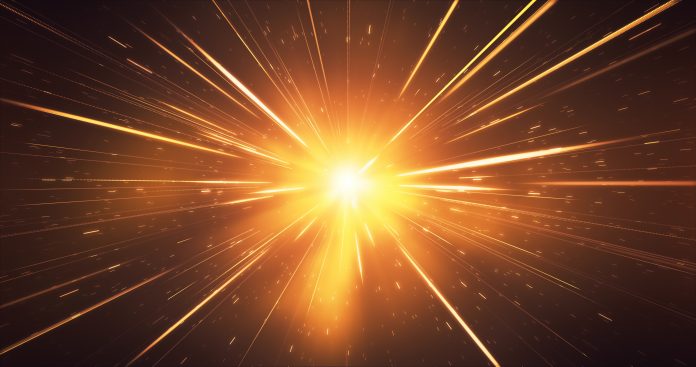A colossal space explosion, triggered by the merger of two neutron stars, has unveiled the formation of rare chemical elements essential for life
This extraordinary event, known as GRB 230307A, represents the second-brightest gamma-ray burst ever witnessed
An international research team, collaborating with experts from the University of Birmingham, deployed an array of ground and space-based telescopes, including NASA’s James Webb Space Telescope, Fermi Gamma-ray Space Telescope, and Neil Gehrels Swift Observatory, to capture the space explosion in all its brilliance.
The aftermath of massive space explosion
The aftermath of the space explosion revealed the presence of tellurium, a heavy chemical element. Additionally, researchers suspect that elements like iodine and thorium, vital for life on Earth, were among the materials expelled during this cosmic spectacle, often referred to as a kilonova.
Neutron stars collide, elements emerge
Dr. Ben Gompertz, an Assistant Professor of Astronomy at the University of Birmingham and co-author of the study, shed light on the origins of this extraordinary event. He explained that the gamma-ray burst resulted from the powerful collision between two neutron stars. These stars, after billions of years in a cosmic dance, merged to produce the space explosion witnessed in March.
Unveiling the mysteries of the universe
GRB 230307A outshone the Milky Way Galaxy, being over a million times brighter than our entire galaxy combined. This marks the second instance of identifying heavy elements through spectroscopic observations following a neutron star merger, enhancing our understanding of the formation of these fundamental building blocks of life.
The promise of the James Webb Telescope
Lead author of the study, Andrew Levan, Professor of Astrophysics at Radboud University, emphasized the significance of this discovery. He expressed that, thanks to the James Webb Space Telescope, we are closer to understanding where all elements come from, a journey that began over 150 years ago with Dmitri Mendeleev’s periodic table.
Investigating neutron star mergers
The researchers are now eager to delve deeper into the mechanisms of neutron star mergers and the astounding element-generating explosions they generate. Dr Samantha Oates, a co-author of the study, highlighted the transformative capabilities of the James Webb Space Telescope, which allows us to explore these cosmic mergers with unparalleled precision.
A door to a new universe
Dr. Gompertz concludes with optimism, noting that until recently, long-lived mergers capable of powering gamma-ray bursts were beyond our understanding.
The next challenge lies in discovering more of these extended mergers and deciphering the creation of even heavier elements. This groundbreaking revelation marks a significant step toward a transformative comprehension of our universe and its inner workings.











